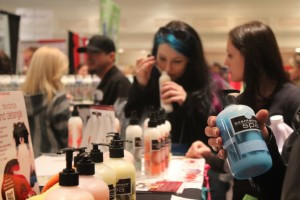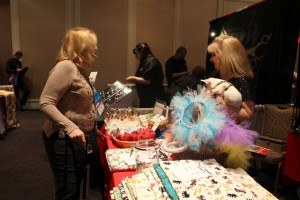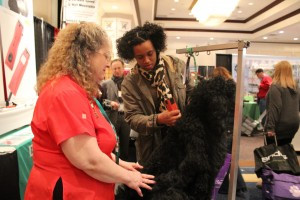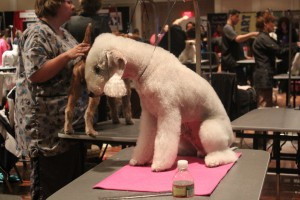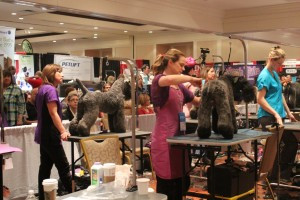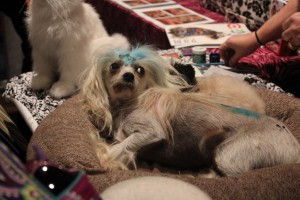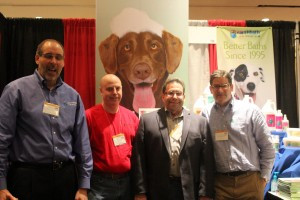Whether it’s called a toy or a treat, having something to chew on is top priority for small animals.
These guys have teeth that continually grow, and gnawing is a natural way for the animals to keep their teeth at the proper level to provide healthy eating habits and good dentition.
But chew toys aren’t just a necessity, they’re also fun.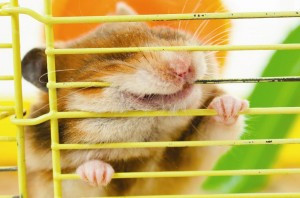
Bright colors and enticing flavors are not only attractive to the small animals they’re made for, but they also attract the attention of the people shopping in a store. After all, it’s become pretty common, no matter what the species, for people to treat their pets like part of the family. It’s a trend that holds true for small animals as much as it does for dogs and cats, making it easy for customers to pick up a toy for their pet while shopping for the basics of food and bedding.
“Customers are always looking for something new and fun to give their small pet, so it is important to keep the category stocked with new and different options,” Jason Casto, director of Kaytee Hard Goods, Pets International, said.
Luckily, with the wide variety of popular treats on the market and the exciting new products being launched this spring, there is plenty to keep a store’s small-animal toy category well-stocked and fresh.
Puzzling It Out
Most owners of small pets understand the importance of providing chew toys to satisfy an animal’s natural gnawing instinct. But toys provide so much more than just something to chew on. They are also important for intellectual stimulation, which is not only fun for the pets and helps encourage their natural urge to forage, but it’s also fun for owners to watch their pets playing and interacting with toys.
With that in mind, Vitakraft has introduced an exciting new interactive toy, the SunStation, which makes nutrition and enrichment fun. The product is a wooden puzzle-type toy, with pieces of rope that the animal will pull to remove the squares, where treats can be hidden to entice the animal to play with the toy and also serve as a reward.
SunStation all-natural treats are paired with this toy, which can make a great end-cap display and also increase incremental sales as customers return to buy more treats to keep their pets playing with the toy. This toy is designed for rabbits, but could be used for other species as well.
A similar item, the Nut Knot Nibbler, has been around for years and is still very popular. The all-natural wood toy combines a variety of shapes and textures into a type of ball. Pets nibble on the wooden toy until they reach the almond nut hidden inside.
“Small animals want to hunt for their food, and these types of toys help with that foraging instinct, as well as providing a nutritional treat,” Lisa Kniceley, trade sales specialist, Vitakraft Sunseed, Inc., said.
Straight-Out Chews
While puzzles and games are exciting, traditional toys made just for chewing are very popular too, and have plenty of fun flavors and varieties to keep interest high.
Vitakraft’s Crunch Sticks and Treat Sticks continue to be popular items, with a wide range of flavors including wild berry and popcorn.
“We tend to humanize our pets, therefore we want to humanize the treats we give them,” Kniceley said. “That’s some of what drives our flavor choices, as well as our fun items like the Vita Prima line of Garden Veggie Pizzas.”
The treat looks like a pizza but is formulated for small animals with toppings such as carrots, leeks and pumpkin.
Pizzas aren’t the only humanized treat available for small animals. Marshall Pet Products offers Salad Bowls in two varieties, Fruit and Veggie. Made of Timothy hay bowls filled with bits of dried fruits and vegetables, these are a nutritious treat for small animals.
Wood toys are following the same trends. Look for Kaytee’s Layer Cakes this summer, a wooden chew toy made to look like a small cake, where the chocolate and vanilla layers are really different shades of wood.
Kaytee is also giving a traditional shape a new twist with its line of Carrot Patch toys. The line comes in three varieties—wood, sisal and loofah—all in the shape of a carrot, but each with a specific dental benefit. The wood helps trim teeth, the sisal conditions them, and the loofah helps floss and clean the animal’s teeth.
And as with most things, bigger can be better for small animal chews. After all, the more there is of the treat, the longer it will last.
Vitakraft’s Garden Pops, in strawberry and apple flavors, provide layers of chewing fun for small animals. Each has a soft, wood center covered with a crunchy baked biscuit and layered with flavored toppings.
Kaytee’s Jumbo Crispy Garden, launching this spring is also one of the largest chew toys made specifically for small animals. With carrot or corn shapes, the dried fruit gourd will keep animals busy for a while.
Making it Fun
One of the best ways to show customers just how much fun these treats and toys can be is to give them to the small animals living in your store.
“Having toys in the cages helps customers see that these products are more than just a treat, they’re a necessity,” Casto said. “Without a safe source for chewing, small animals could chew on food bowls, water bottles or cage parts, causing a potentially poor consumer experience.”
In addition to having them out, create a fun end-cap highlighting the new toys with some of the more popular foods, making the treats a natural addition to any shopping experience.



 come to our first Crash Your Store series, where we randomly stop into pet retail outlets, interview the owner/staff, take some photos and feature something fun they are doing at their business.
come to our first Crash Your Store series, where we randomly stop into pet retail outlets, interview the owner/staff, take some photos and feature something fun they are doing at their business.
 ore, we have treats inside and put them at the dog’s level and then the dogs have to go around the store and sniff out the eggs and find the egg that they want,” she explained.
ore, we have treats inside and put them at the dog’s level and then the dogs have to go around the store and sniff out the eggs and find the egg that they want,” she explained.





